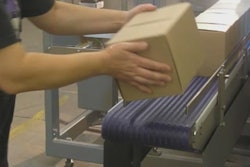In this first in a two part series, Vitters talks about:
* Packaging as a valuable resource for the future
* The three key points for sustainable design
* Starting a sustainable packaging program
Vitters on value
Sustainable packaging programs incorporate a vision of the world in which packaging is not considered waste, but is seen as a valuable resource for the future. I am describing programs that utilize high quality, environmentally effective packages that are optimized for value through every phase of production, distribution, use, and recovery.
When we talk about sustainable packaging at Coca-Cola, it is in the context of an integrated system.
* Understanding and optimizing product protection, while lowering the environmental footprint of the package material
* Understanding and lowering the environmental impacts of the transportation and distribution system
* Understanding and meeting the needs of consumers
* Understanding and optimizing end-of-life scenarios
Focusing on an integrated system helps to ensure the sustainability of a package from both an environmental and economic perspective across its lifecycle.
Vitters on design
Design considerations at Coca Cola are organized around effectiveness, efficiency, and eco-innovation. Designing for effectiveness at Coca-Cola covers the entire lifecycle of the package and includes material safety and recyclability. In terms of efficiency, we are concentrating on reducing the weight of our packaging. For eco-innovation, we are investigating innovative bio-based resins.
The key 2007 project at Coca-Cola in the efficiency space involves PET and glass light-weighting. For example, on our DASANI brand bottle, we will reduce its weight by about 20 percent through redesign efforts. We anticipate this reduction will cut as much as 34 million pounds of PET from DASANI bottle production this next year. Over the next five years, we anticipate reductions nearing 280 million pounds of PET.
From an effectiveness standpoint in 2007, we are working on designing consumer preferred packaging components that take into account end of life considerations (e.g., recycling-friendly inks, colors, barrier technologies). For example, early in a DASANI project, designers indicated that a light-blue color, rather than the original choice of dark blue, would help ensure high recovery value in the PET recycling stream. Coca-Cola went ahead with the light-blue bottles.
In the eco-innovation space, we are investigating bio-based resins in both cup and bottle applications. Research into bio-based bottles involves not only package design, but also examines end-of-life-scenarios. Before taking steps forward in the direction of commercializing bio-based bottles, we must ensure that a plan is in place to cost-effectively recover and reuse these materials without negatively impacting the existing recycling stream.
Vitters on getting started
The first step in a sustainable packaging program is to understand the environmental footprint of the package. Create a bill of materials and look at it not just from a protection, cost, marketing, and use perspective, but also from weight and end-of-life value standpoints as well. Work to efficiently reduce the weight of your packaging. Investigate the use of materials that have an end-of-life value that will help to promote recovery and reuse. Also investigate materials that will minimize the mass and weight of any waste being diverted into landfills. Begin to look at your packaging from a lifecycle perspective.

























